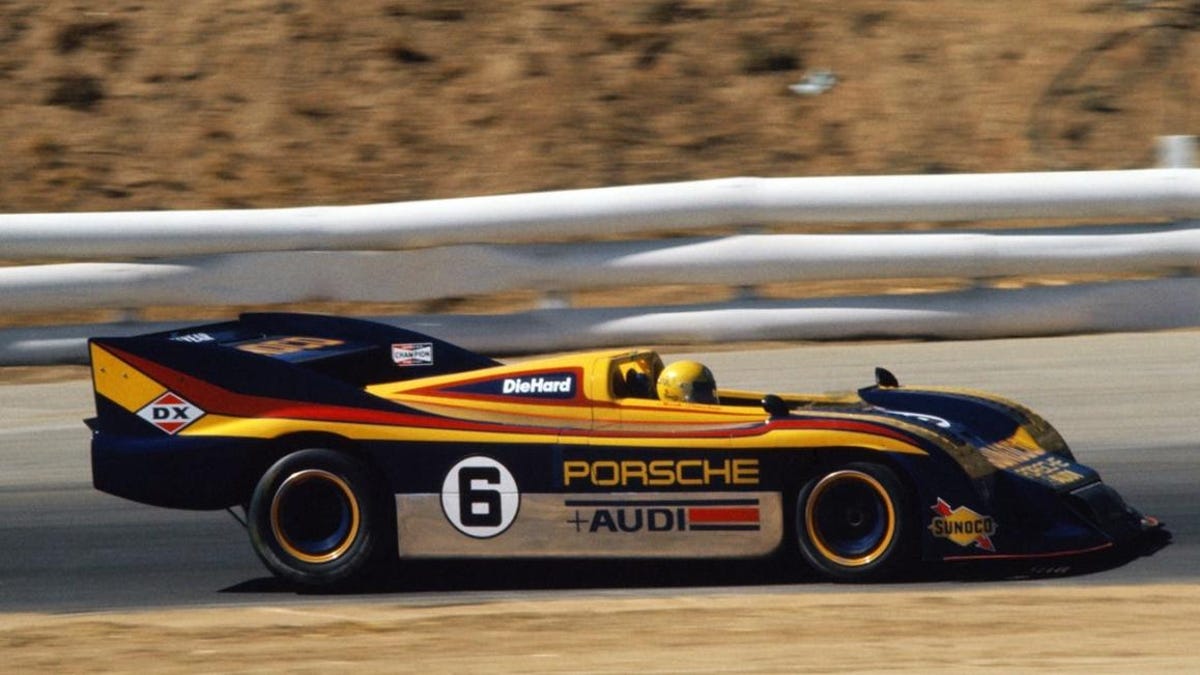Mark Donohue once famously said “If you can leave two black stripes from the exit of one corner to the braking zone of the next, you have enough horsepower.” He was talking about the all-conquering turbocharged Porsche 917s that he raced in the Can Am series, which were capable of over 1,000 horsepower in qualifying trim. These impressively fast wedgy doorstops basically set the series up to fail, as they were the fastest things on four wheels in the early 1970s. Fifty-one years later Porsche has finally built this car’s spiritual successor, and it’s an electric street car.
The 917s that Donohue drove were basically a pair of turbochargers, twelve wailing cylinders, a bunch of high-test gasoline, a seat, and a wing. There wasn’t anything extraneous in the 917-30 that dominated the Can Am field in 1973. The tire and aerodynamics technologies available in that era are hardly a fraction of what we know today, meaning the 917 was as difficult to drive quickly as a pig is to mud wrestle. Its four-figure horsepower was delivered in a peaky boost method, making it all the more hardcore.
For the 1973 season, Mark Donohue’s Sunoco-sponsored turbo heater was the class of the field, winning six of the season’s eight rounds. At Laguna Seca that October, so-called Captain Nice lapped the entire field on his way to victory over the big-block-Chevy-powered Shadow of Jackie Oliver. It wasn’t even a fair fight. Everyone else on the grid was essentially fighting with one hand tied to the opposite foot.
Using technology that it developed in its winning Formula E effort, Porsche is once again putting all of its brainpower into making big horsepower numbers capable of pushing quickly around a race track. The Taycan Turbo GT is a stunning piece of engineering, pushing the part of the company that builds track cars (typically bought by dorks more worried about turning them for a profit than turning lap times) to think differently about how to go fast on track. The nearly-1100 horsepower Taycan dropped a couple hundred pounds and gained lots of aerodynamic downforce to find that speed.
There’s almost no way to prove it, but I would guess that the Taycan Turbo GT would have absolutely bullied the 917-30 in a lap battle. Laguna Seca has changed too much since the 70s to make a lap time comparison worthwhile, and while the 917-30s have run at Laguna since, it’s been in the hands of wealthy collectors, not exactly indicative of the car’s outright capabilities. The 917 would have an outright top speed advantage, but it would lose on mid-corner grip and off-corner acceleration. And it wouldn’t be close.
That Porsche is delivering a road-legal electric sedan with 1,100 horsepower isn’t surprising. It’s just delivering on a racing car promise it made 51 years ago. And that was a promise worth waiting on.
There aren’t many automakers who can get away with a four-door track car, and there are even fewer which can remove the rear seats from the car and still make it compelling. A Toyota GR Corolla Morizo Edition and a Taycan Turbo GT with Weissach Package would make one hell of a two-car solution.

